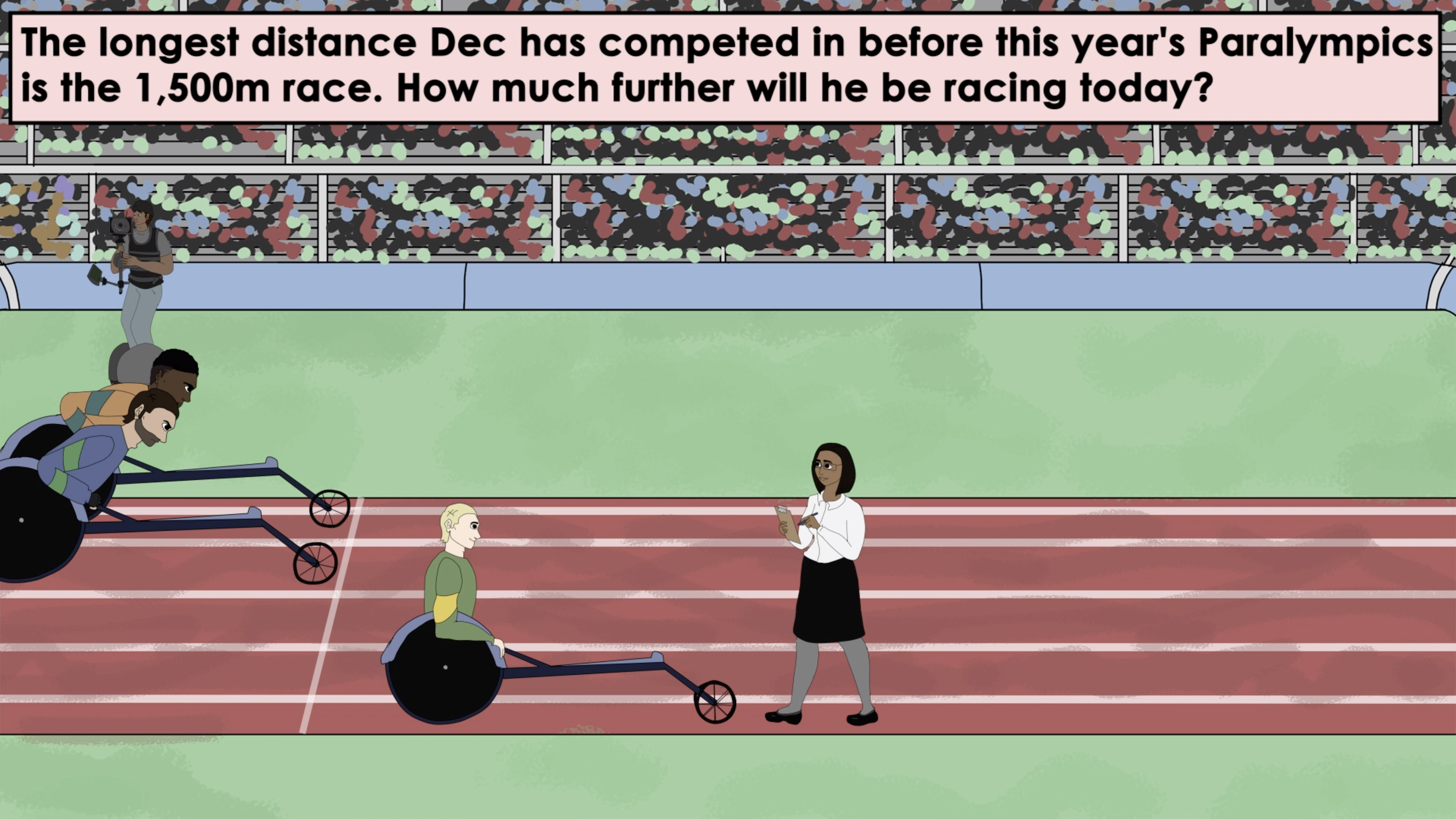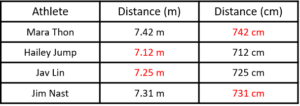Multiplying By 10, 100 and 1,000 Year 5 Multiplication and Division Learning Video Clip

Step 8: Multiplying By 10, 100 and 1,000 Year 5 Multiplication and Division Learning Video Clip
Tripp and Tori are at the Olympic and Paralympic Games. Use your knowledge of multiplying by 10, 100 and 1,000 to help them convert some distances and heights from metres to centimetres, kilometres to metres and centimetres to millimetres.
More resources for Autumn Block 3 Step 8.
Not a member? Sign up here.
Discussion points for teachers
1. Help Trip and Tori to work out the missing values.
Discuss how many cm there are in 1m. Discuss how to calculate the missing values.

2. Which athlete finished in first position?
Discuss how the scores for long jump work. Discuss the shortest distance and the longest distance.
Mara Thon – 7.42m
3. How much further will he be racing today?
Discuss how to convert 5km into metres and the calculation needed to work out how much further he will be racing.
3,500 m (5,000m – 1,500 m)
4. Trip and Tory have forgotten how to change km to m. Help them put the distance events in order from shortest to longest.
Discuss possible methods needed to help order the distances.
100m, 0.15km, 0.2km, 400m, 0.8km, 1.5km, 5km
5. What distance could the last event be? Give your answer in metres.
Discuss the events from earlier in the day. Discuss what 100 times longer than each event would be.
10,000m, (100m x 100), 15,000m (0.15km x 100)
6. Help the organisers convert the distances into millimetres.
Discuss the calculations needed to convert cm to mm.

7. What could her height be? Give your answer in millimetres.
Discuss the heights Hailey and Jim jumped. Discuss heights that lie between these amounts. This question is open-ended for the children to explore.
Various answers, for example 1,953, 1,962, 1,980 (Any number between 1,944 mm and 1,990 mm that has a digit sum of 18)
National Curriculum Objectives
Mathematics Year 5: (5C6b) Multiply and divide whole numbers and those involving decimals by 10, 100 and 1,000
This resource is available to play with a Premium subscription.





